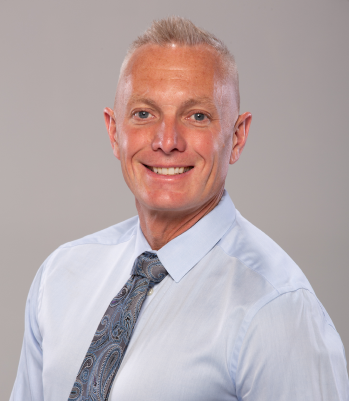Joseph Williams, M.D.
- Specialist in Minimally Invasive Spine Surgery Techniques
- Board Certified – Fellowship Trained Spinal Surgeon
- Orthopedic Spine Surgeon


Joseph Williams, M.D.
- About
- Education
- Honors & Awards
- Publications
Biography
Dr. Joseph Williams is a Board Certified Orthopedic Surgeon that has completed a Spine Fellowship. Currently he is practicing in Reno, Nevada at Sierra Regional Spine Institute. He joined the Sierra Regional Spine Institute in August of 2021. Prior to this he was a partner at Orthopedic Center of Illinois from August of 2006 until July of 2021.
Dr. Williams specializes in Orthopedic Spine Surgery with a strong focus on minimally invasive surgical techniques.
He also performs a significant amount of general Orthopedic Surgery. This includes open reduction with internal fixation as well as elective general orthopedic surgeries of the hip, knee and upper extremities.
Dr. Williams has provided General Orthopedic Trauma coverage at the two Level I Trauma Centers in Springfield, Illinois area. These trauma centers cover the Central Illinois area. He provided this level of call coverage from August of 2006 until July of 2021.
Dr. Williams also provide Spine Trauma Coverage at these same two Level I Trauma Centers in Springfield, Illinois for the same dates.
He was a committee member of the Green Belt Project, Opiod Prescribing at Memorial Medical Center. Dr. Williams maintains a strong interest in working with the hospitals to limit use and need of opiod medications by means of patient education and improved surgical techniques.
For the last 14 years Dr. Williams has been a member of the Community Faculty for the Southern Illinois University Orthopedic Residency Program. His duties include training Residents both in and out of the operating room along with medical students and students from a variety of PA and NP programs.
Medical Licensure
- Nevada
- Illinois
- Indiana
- Arizona
Professional Memberships




- North American Spine Society
- American Academy of Orthopedic Surgeons
- Sangamon County Medical Society
- North American Spine Society
- Society for Minimally Invasive Spine Surgery
Education
Bachelors of Science, Microbiology
1992 – 1996
University of Nevada, Reno
Doctor of Medicine
1996 – 2000
University of Nevada School of Medicine
Served as Vice President of the class of 2000
Served as Vice President of the class of 2000
Orthopedic Residency
2000 – 2005
Southern Illinois University Orthopedic Department
Spine Surgery Fellowship
2005 – 2006
Ortho Indy Spine Fellowship
Honors & Awards
- USMLE Step I
- USMLE Step II
- American Board of Orthopedic Surgery Written 2006
- American Board of Orthopedic Surgery Oral Exam 2008
- American Board of Orthopedic Surgery Recertification 2017
Appointments
Sierra Regional Spine Institute
Orthopedic Spine Surgeon
2021 – Present
2021 – Present
Orthopedic Center of Illinois
Orthopedic Surgeon and Partner
August 2006 to 2021
Presentations
Complex Surgical Patient Care Conference
Optimizing Elective Orthopedic Patients
Minimally Invasive Spine Surgical Techniques
Publications
Toth JM, Schwartz DG, Mobasser JP, Williams JL:
Instrumented Lumbar Corpectomy and Spinal Reconstruction Comparing rhBMP-2/Compression Resistant Matrix, rhBMP-2/Absorbable Collagen Sponge/Ceramic Granules Mixture, and Autograft in Two Different Devices: A Study in Sheep.
Spine 41; 6: E313 – E322, 2016
Instrumented Lumbar Corpectomy and Spinal Reconstruction Comparing rhBMP-2/Compression Resistant Matrix, rhBMP-2/Absorbable Collagen Sponge/Ceramic Granules Mixture, and Autograft in Two Different Devices: A Study in Sheep.
Spine 41; 6: E313 – E322, 2016

“Dr. Williams was very confident in his diagnosis and his plan of care for treating my condition. But before he did that, Dr. Williams took a holistic approach and addressed my emotional needs about having surgery, making sure I had a positive attitude and was prepared for the procedure. Having Dr Williams address both my mind and body made the decision to choose him as my surgeon a no brainer! It was a pleasure having him in charge of my care. Well done!”

“Surgery was a success with relief of pain immediately. He and his nurse Christina go out of their way to accomodate and follow up promptly if issues..”

“Always friendly, caring and respectful. Explains things to you were you can understand it. Continues to follows your recovery from surgery.”